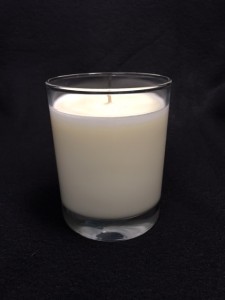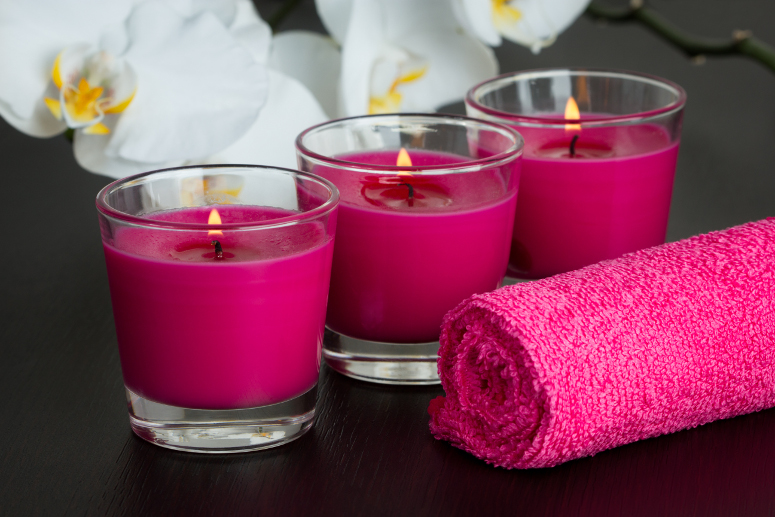We get frequent questions about eliminating wet-spots and reducing frosting in soy candles. It seems as if even experienced candle makers battle this problem at times, whether it’s due to changes in the weather, variations in cure temperatures, different fragrances or colors – it’s one of the most frustrating things a candle maker can encounter. It’s also very difficult to trouble-shoot as it’s nearly impossible to control all of the variables.
We have heard anecdotal evidence of a possible remedy for some of the pitfalls of working with soy wax, so we decided to jump into testing mode and see if this remedy might actually work the way everyone says, and we were thrilled with the results. Read on for more information!
Rumor has it that you can use 1/2 teaspoon of Coconut Oil per pound of wax to help reduce or eliminate wet spots and frosting. But what happens when you actually do this? Many soy waxes are pretty soft already. Will adding coconut oil make the wax even softer? According to the chatter on the web, it can make your wax even softer, which is why you don’t want to use any more than 1/2 teaspoon per pound.
Well, we tried this out to see how it worked using GW464 wax. The candle looked absolutely beautiful. Creamy looking wax that adhered completely to the glass, and continued to adhere to the glass even with multiple significant changes in temperature caused by our crazy Alabama spring. However, the wax is pretty soft. So if your candles are on display and someone touches the surface of the candle it would almost certainly leave a fingerprint or mark on your candle. We liked the result we got, but we still wanted to try to harden the candle up a bit.
For our next test, we wanted to see if using a bit of stearic acid with the coconut oil would harden up the wax while still retaining the creamy appearance and excellent glass adhesion. So I made four large candles using GW464, 1/2 teaspoon of coconut oil per lb of wax, and 1/8 teaspoon of stearic acid per pound of wax. Stearic Acid is made from palm oil and is known to raise the melting point of wax and harden it. I was absolutely delighted with the result of this test. The candle once again adhered to the glass without a single wet spot and the wax is firm to the touch and does not leave fingerprints or marks on the top of the candle.

But what about the burn? The candles made both with and without stearic acid burned exactly the way a candle without these additives burned. We noticed no significant difference in scent throw, melt pool, or burn rate.
I believe I have found my new favorite method of making soy candles. If you have experienced the frustration of wet spots in your soy candles or frosting, you may want to consider testing by adding coconut oil and stearic acid to see if they make a difference for you. We make no guarantees about how this might work, but we can say with conviction that it worked during our tests, and we have become believers!
Happy Candle Making!
